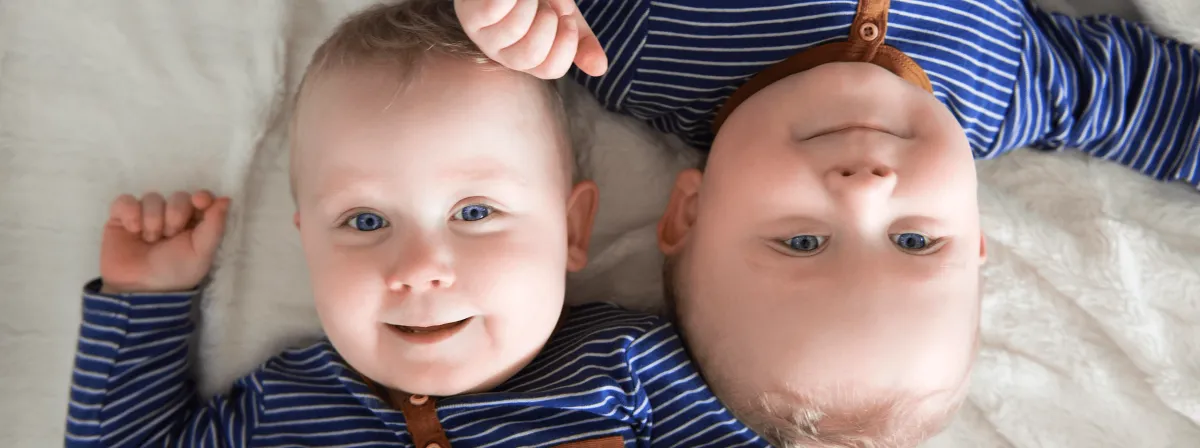Miracle of Time: Baby Born from 30-Year-Old Frozen Embryo Sets New Record
A Tennessee couple has welcomed what scientists believe may be the world's "oldest baby" – born from an embryo that was frozen for nearly three decades. The remarkable birth has reignited conversations about the possibilities and ethics of long-term embryo preservation, while offering hope to countless families struggling with infertility.
A Three-Decade Journey to Life
Rachel and Philip Ridgeway of Knoxville, Tennessee, became parents to their daughter Molly Gibson in October 2020, but Molly's journey began long before her parents even met. The embryo that would become Molly was created and frozen on October 14, 1992 – making her embryo older than her 26-year-old mother at the time of birth.
The previous record holder was Molly's older sister, Emma, who was born in 2017 from an embryo frozen in 1992, just one year after Molly's embryo. Both embryos were donated by an anonymous couple and had been stored at the National Embryo Donation Center (NEDC) in Knoxville for decades.
Breaking Down the Science
Embryo cryopreservation, commonly known as embryo freezing, involves preserving embryos at extremely low temperatures – typically around -196°C (-321°F) using liquid nitrogen. At these temperatures, all biological activity essentially stops, allowing embryos to remain viable indefinitely.
The process typically follows these steps:
- Embryos are created through in vitro fertilization (IVF)
- They're gradually cooled to prevent ice crystal formation
- Cryoprotectants are added to protect cellular structures
- Embryos are stored in specialized tanks filled with liquid nitrogen
Dr. Jeffrey Keenan, medical director at NEDC, explained that there's theoretically no limit to how long frozen embryos can remain viable. "We've had numerous successful pregnancies from embryos frozen for over 20 years," he noted.
The Numbers Behind Embryo Donation
The practice of embryo donation has grown significantly over the past decades. According to the Society for Assisted Reproductive Technology (SART):
- Approximately 1 million embryos are currently in frozen storage across the United States
- About 5,000 embryos are donated annually for reproductive purposes
- Success rates for frozen embryo transfers range from 20-50%, depending on various factors including the woman's age and embryo quality
- The average cost of embryo adoption ranges from $2,500 to $8,000, significantly less than traditional IVF cycles
Ethical Considerations and Future Implications
While Molly's birth represents a scientific triumph, it also raises important ethical questions that continue to divide medical professionals, ethicists, and policymakers.
The Promise of Hope
Supporters argue that long-term embryo preservation offers invaluable opportunities for infertile couples. The NEDC has facilitated over 1,000 births through embryo donation, providing families with genetic children when other options have failed.
Complex Questions
Critics raise concerns about the implications of indefinite embryo storage, including questions about consent, the rights of genetic parents, and the psychological impact on children learning about their unique origins. Some ethicists worry about treating embryos as commodities or creating unrealistic expectations about fertility preservation.
A Growing Trend in Reproductive Medicine
Molly's story reflects broader trends in reproductive medicine. Advanced maternal age pregnancies are increasing, and more couples are turning to assisted reproductive technologies. The global fertility services market is projected to reach $41.4 billion by 2026, with embryo freezing playing an increasingly important role.
Countries worldwide are grappling with regulations around embryo storage. While the United States has relatively permissive policies, other nations impose strict time limits – typically 10-14 years – after which embryos must be destroyed or donated to research.
Looking Forward: What This Means for Families
Molly Gibson's remarkable birth story offers tangible hope for the estimated 12% of women of reproductive age who experience fertility challenges. Her successful development from a 30-year-old embryo demonstrates that long-term cryopreservation doesn't necessarily compromise embryo viability.
For the Ridgeway family, Molly's unique origin story is simply part of their journey to parenthood. "She's our miracle baby," Rachel Ridgeway shared. "The science that made her life possible is incredible, but at the end of the day, she's just our daughter."
As reproductive technology continues advancing, Molly's story may inspire new approaches to fertility preservation and family building, while reminding us that sometimes the most extraordinary beginnings lead to the most ordinary – and precious – of lives.
